Leaving Livingston
We had spent a wonderful few days at anchor in Cayo Quemado, which translates to Burnt Cay. We later discovered that this was due to charcoal production.
It really is an idyllic spot and we would encourage any cruisers visiting the Rio to break the passage up and enjoy the tranquility.
Once again we anchored close by to the sail maker, as we just wanted Tom to make a check over. We also met up with fellow cruisers for a meal in Texan Mikes restaurant just around the corner, and ended going back the next day as well. If you like burgers, Mike does not disappoint, and he also gave us a lift in his launch to and from Livingston in order to clear out with our Agent Raul.
The next afternoon, with the anchor stowed, we headed towards the river entrance through the gorge. It is hard to describe the beauty of the gorge, and it is very surreal to witness it from the deck of a sailboat. This is one place where pictures just cannot do justice, you really have to experience it. The river meanders for many miles and with each turn the vista is just breathtaking.
We followed our inbound track on the chartplotter and safely navigated to Livingston, arriving late afternoon. The high tide was just after 6pm, and we had once again booked the services of Hector and his Father in two powerful motorboats, one to tow us and one to tip us over the sandbar.
Whilst on the subject of tides, we use an app called Aye Tides, which works worldwide and offline.
Whilst on the subject of tides, we use an app called Aye Tides, which works worldwide and offline.
Hector appeared on the scene over an hour early, but clearly wasn’t going to wait for another inch of tide, so we made a bridle at the bow and passed our spinnaker halyard over.
It is in moments like these that we wish we had a lifting keel, catamaran, or frankly anything with a shallow draft.
Once over the bar we felt a pang of emotion, it was certainly a bitter sweet moment, knowing we would be unlikely to return to a most wonderful place, the lovely people and a lifetime of memories. Guatemala has certainly made a deep, lasting impression on us.
We pushed on heading 10nm North to an anchorage popular with cruisers entering and leaving the river, at Cabo Tres Puntas. Using a waypoint from last time we found a spot to anchor and managed to avoid the fishing nets, as kindly pointed out by fellow cruisers. The wind had died, the sea state was smooth, and after a late dinner we slept very well.
The next morning we awoke to a glassy calm vista and watched as fishermen recovered nets, and hungry pelicans looked on.
Our objective after breakfast, was to head to Utila in the company of friends on Castalia and Susimi. The forecast had been for light winds, so we had expected to motor all the way. However, forecasts are often wrong and within half an hour of leaving the anchorage, we had the main and genoa out and were fair flying along. It felt very invigorating to be back out at sea again, and on the first chapter of our long voyage to New Zealand.
Our objective after breakfast, was to head to Utila in the company of friends on Castalia and Susimi. The forecast had been for light winds, so we had expected to motor all the way. However, forecasts are often wrong and within half an hour of leaving the anchorage, we had the main and genoa out and were fair flying along. It felt very invigorating to be back out at sea again, and on the first chapter of our long voyage to New Zealand.
Of course, it was not all plain sailing. Far from it...
By late morning the wind had veered sufficiently to make heading to Utila in the East fruitless, as it was more or less on the nose. That gave us two choices: furl away the sails and put the engine on, or tack North or South continuing to sail. We ended up doing some of both, but it became clear that if the wind stayed in the same direction, we would need to head a long way North. It does seem counter intuitive to be sailing well, but heading in the wrong direction, but eventually it paid off and when we tacked back, we had a decent angle to the South of Utila. By nightfall the first squall had hit us with strong winds and heavy rain. We had fortunately received warning of it over the VHF so could prepare ourselves. As it was not too bad and passed relatively quickly, we once again deployed most of the main and genoa and picked up nice speed. About half an hour later we were frantically furling in first the genoa and then the main as the wind rose dramatically in just a few seconds, peaking at 35.1 knots according to our instruments. The sea was just white foam and the noise of the wind almost deafening. This time the squall had caught us out and we were not as prepared as we should have been, even though we had our lifejackets and harnesses on. By that, we mean we just had a little too much main sail out. In order to furl it away quickly, we broke a cardinal rule and used the electric winch. This resulted in the remainder of the main going away with multiple creases, and it later took us a while to sort this out. You are always learning on a sailboat no matter how many miles under the keel.
We eventually arrived in Utila by taking our preferred Northerly route. It is a little longer, but we are sceptical of the chartered depths on the Southern reefs by the approaches. This was later borne out when a fellow cruiser who took the Southerly route, said that the actual depths did not correspond to the charts. We endured one final squall, which handily washed off all the salt and anchored in the same spot as last year, using our previous track for guidance through the reef fringed entrance.
The next task was to clear in with the Port Captain and Immigration. We already suspected Immigration might be an issue, as our Central America visa had expired on passage, and our suspicions proved to be correct. The Immigration official would not grant a temporary 30 day visa, and said that we had to go to the next island of Roatan and visit the commercial port to do that. We were told we had ten days to do so.
As we had spent a month in Utila last season, leaving in a couple of days was not going to be an issue. The one thing we did want to do, was buy some homemade sticky cinnamon buns from the local bakery, they are just so delicious, one is never enough!
A lack of wind saw us motor just over 7 hours and once again, we used our tracks from last year to enter the reefs into one of our favourite anchorages, French Harbour, about half way down the South coast.
Once settled in, we made a visit to Immigration to sort out our visas. This was on a Monday, and by Thursday we had collected our freshly stamped passports. We could have had them back sooner, but high winds on Tuesday and Wednesday meant we preferred to stay on board.
It was just before Christmas that we ran the generator to charge up the batteries, and run the watermaker. A friend dropping Lynne back noticed soot coming from the exhaust and a few minutes later, the soot had turned into billowing black smoke. We shut the generator down, took the insulating clamshell off and waited for it to cool down. We noticed that the airbox had fallen off, and later on that day we failed to restart it. Having recently spent so much money on repairing the electrical side, we should have asked the mechanic to strip down the engine, but we had a time pressure to catch the tide to leave the river. We contacted Roky and made arrangements to meet him and his team on the other side of the sandbar, as the next high tide for entering the river was in June.
Just coming back to Christmas for a moment, thanks go out to wonderful hosts Sandy and Brit on Halcyon for a lovely Christmas Eve get together on their spacious catamaran. We also enjoyed a delicious curry and homemade onion Baji's one night onboard Susimi with Hazel and Paul. Special thanks to Sandra and Kevin for the wonderful gifts of new full face snorkel masks and nautical cushions.
Our new rain catching system also got a good testing one day.
Reluctantly we headed back to the Rio, and fortunately it was a calm day when once again the generator was removed. We then headed back to Cabo Tres Puntas to wait for news.
In early January, a trickle of news started to feed back to us. The thermostat was broken and allowed the engine to overheat. The valves were damaged, the water cooling pipes partially blocked, a piston ring had broken and there was much evidence of salt water corrosion.
Roky assured us that it could all be fixed, but we would have to wait for parts, so we made the decision to head to Placencia in Belize.
Clearing into Belize is not a quick process, but we managed to do it all in just half a day. First we had to catch a water taxi in town for a 20 min high speed ride to Big Creek, where Customs, Immigration, Port Health and the Port Captain are based. It is a slick operation as when you get off the water taxi, land taxis are waiting to take everyone to Immigration. Fortunately, all the offices we needed to visit were close together, so it wasn't an arduous process. All in all, it cost us about US $160 once all the fees and taxis had been paid. In this fee was a week's worth of compulsory National Park fees at $2.50 per day. If we stay longer than a week we can pay the National Park fee in Placencia.
The first thing that strikes you about Belize is the locals all speak English, as it was once a British Colony. Most also speak some Spanish, as the country is sandwiched between the Spanish speaking countries of Mexico and Guatemala. Like the surrounding countries, it was also once home to a vast Maya civilisation and even today, Guatemala and Belize are still in dispute over bordering territories.
One of the great attractions is diving, courtesy of the vast World Heritage coral reefs straddling the coast, and part of the vast 560 mile long Mesoamerican reef system. All of which makes for nice diving, but not especially easy navigation by boat. In fact electronic navigation charts are simply not to be trusted and all the cruisers we know, use a Cruising Guide by Captain Freya Rauscher. This provides detailed notes and hand drawn charts, and is simply the best source for navigation. Of course, not having planned to come to Belize, we sold ours a few months ago! Fortunately, fellow cruisers helped us out with waypoints, but we will be sticking to Placencia rather than exploring the numerous Cays.
In the meantime, we have had a wander around the town and shore front, and treated ourselves to an ice cream.
One other thing we have managed to do in Placencia, is obtain another Raymarine ST6002 autopilot control head. The 'New' one we got last year appears to have cooked in the heat of Guatemala whilst we were back in the UK. As a result, most of the display is black and impossible to read.
With some cleaning up of contacts internally we got the buttons working again and the unit does still work, but of course, far from ideal.
Thanks to Larry on the yacht Lady in Red, we now have a perfectly working replacement and will keep the other as a back up.
We communicate with Roky the mechanic via WhatsApp, and the latest message we had was to say he now has nearly all the new parts, has removed the corrosion and the other parts are due in any time.
With any luck, we can get the genny back on board in a week or so, and continue our passage to Panama.
In many ways the generator issue has been a blessing. At least we can get it fixed to as close to new as possible, and we have ticked another country off the list.
As always, a sailor's plans are made in the sand at low tide!
We eventually arrived in Utila by taking our preferred Northerly route. It is a little longer, but we are sceptical of the chartered depths on the Southern reefs by the approaches. This was later borne out when a fellow cruiser who took the Southerly route, said that the actual depths did not correspond to the charts. We endured one final squall, which handily washed off all the salt and anchored in the same spot as last year, using our previous track for guidance through the reef fringed entrance.
The next task was to clear in with the Port Captain and Immigration. We already suspected Immigration might be an issue, as our Central America visa had expired on passage, and our suspicions proved to be correct. The Immigration official would not grant a temporary 30 day visa, and said that we had to go to the next island of Roatan and visit the commercial port to do that. We were told we had ten days to do so.
As we had spent a month in Utila last season, leaving in a couple of days was not going to be an issue. The one thing we did want to do, was buy some homemade sticky cinnamon buns from the local bakery, they are just so delicious, one is never enough!
A lack of wind saw us motor just over 7 hours and once again, we used our tracks from last year to enter the reefs into one of our favourite anchorages, French Harbour, about half way down the South coast.
Once settled in, we made a visit to Immigration to sort out our visas. This was on a Monday, and by Thursday we had collected our freshly stamped passports. We could have had them back sooner, but high winds on Tuesday and Wednesday meant we preferred to stay on board.
It was just before Christmas that we ran the generator to charge up the batteries, and run the watermaker. A friend dropping Lynne back noticed soot coming from the exhaust and a few minutes later, the soot had turned into billowing black smoke. We shut the generator down, took the insulating clamshell off and waited for it to cool down. We noticed that the airbox had fallen off, and later on that day we failed to restart it. Having recently spent so much money on repairing the electrical side, we should have asked the mechanic to strip down the engine, but we had a time pressure to catch the tide to leave the river. We contacted Roky and made arrangements to meet him and his team on the other side of the sandbar, as the next high tide for entering the river was in June.
Just coming back to Christmas for a moment, thanks go out to wonderful hosts Sandy and Brit on Halcyon for a lovely Christmas Eve get together on their spacious catamaran. We also enjoyed a delicious curry and homemade onion Baji's one night onboard Susimi with Hazel and Paul. Special thanks to Sandra and Kevin for the wonderful gifts of new full face snorkel masks and nautical cushions.
Our new rain catching system also got a good testing one day.
Reluctantly we headed back to the Rio, and fortunately it was a calm day when once again the generator was removed. We then headed back to Cabo Tres Puntas to wait for news.
In early January, a trickle of news started to feed back to us. The thermostat was broken and allowed the engine to overheat. The valves were damaged, the water cooling pipes partially blocked, a piston ring had broken and there was much evidence of salt water corrosion.
Roky assured us that it could all be fixed, but we would have to wait for parts, so we made the decision to head to Placencia in Belize.
Clearing into Belize is not a quick process, but we managed to do it all in just half a day. First we had to catch a water taxi in town for a 20 min high speed ride to Big Creek, where Customs, Immigration, Port Health and the Port Captain are based. It is a slick operation as when you get off the water taxi, land taxis are waiting to take everyone to Immigration. Fortunately, all the offices we needed to visit were close together, so it wasn't an arduous process. All in all, it cost us about US $160 once all the fees and taxis had been paid. In this fee was a week's worth of compulsory National Park fees at $2.50 per day. If we stay longer than a week we can pay the National Park fee in Placencia.
The first thing that strikes you about Belize is the locals all speak English, as it was once a British Colony. Most also speak some Spanish, as the country is sandwiched between the Spanish speaking countries of Mexico and Guatemala. Like the surrounding countries, it was also once home to a vast Maya civilisation and even today, Guatemala and Belize are still in dispute over bordering territories.
One of the great attractions is diving, courtesy of the vast World Heritage coral reefs straddling the coast, and part of the vast 560 mile long Mesoamerican reef system. All of which makes for nice diving, but not especially easy navigation by boat. In fact electronic navigation charts are simply not to be trusted and all the cruisers we know, use a Cruising Guide by Captain Freya Rauscher. This provides detailed notes and hand drawn charts, and is simply the best source for navigation. Of course, not having planned to come to Belize, we sold ours a few months ago! Fortunately, fellow cruisers helped us out with waypoints, but we will be sticking to Placencia rather than exploring the numerous Cays.
In the meantime, we have had a wander around the town and shore front, and treated ourselves to an ice cream.
One other thing we have managed to do in Placencia, is obtain another Raymarine ST6002 autopilot control head. The 'New' one we got last year appears to have cooked in the heat of Guatemala whilst we were back in the UK. As a result, most of the display is black and impossible to read.
With some cleaning up of contacts internally we got the buttons working again and the unit does still work, but of course, far from ideal.
Thanks to Larry on the yacht Lady in Red, we now have a perfectly working replacement and will keep the other as a back up.
We communicate with Roky the mechanic via WhatsApp, and the latest message we had was to say he now has nearly all the new parts, has removed the corrosion and the other parts are due in any time.
With any luck, we can get the genny back on board in a week or so, and continue our passage to Panama.
In many ways the generator issue has been a blessing. At least we can get it fixed to as close to new as possible, and we have ticked another country off the list.
As always, a sailor's plans are made in the sand at low tide!




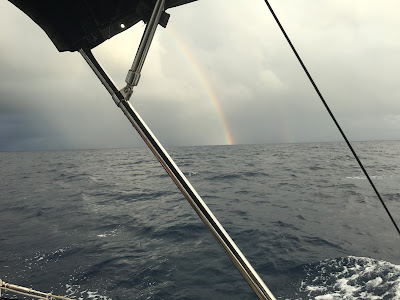
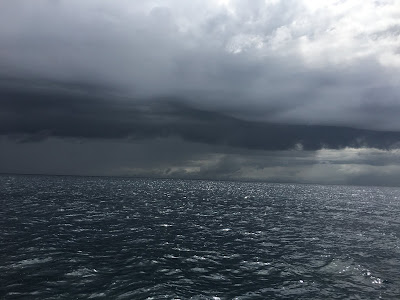
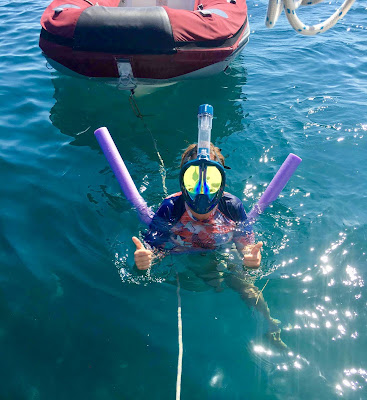

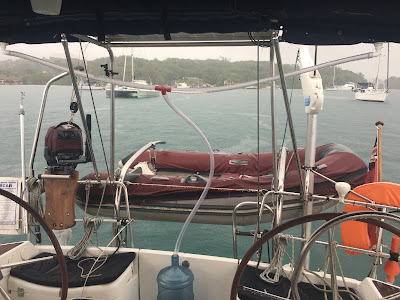

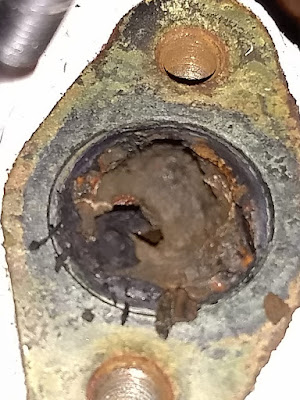

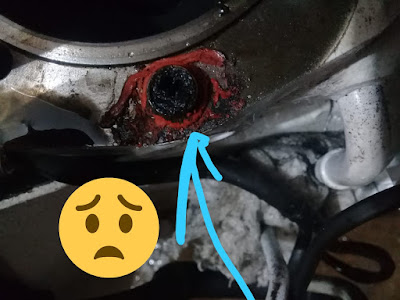
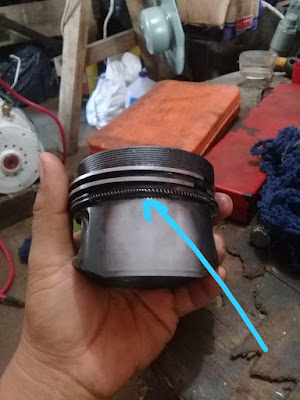



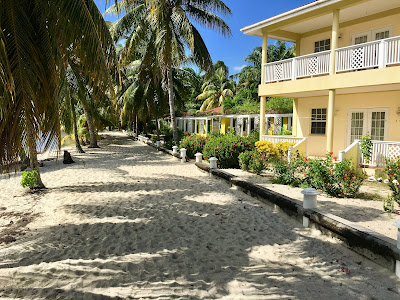






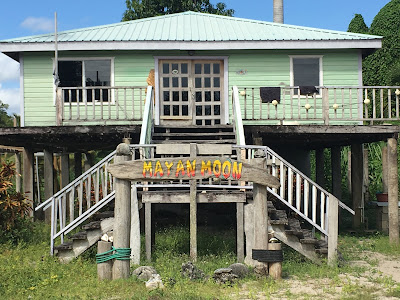

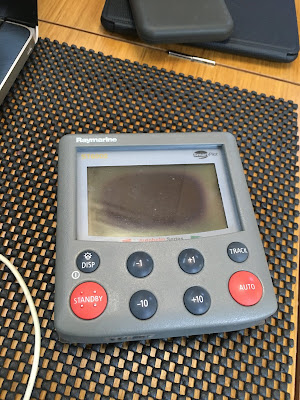
What an experience and don't know how you have stayed so "cool" over the genny problems! As you say, better now than mid Pacific!
ReplyDelete